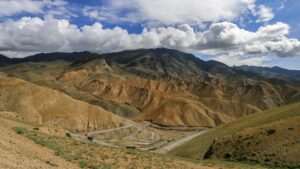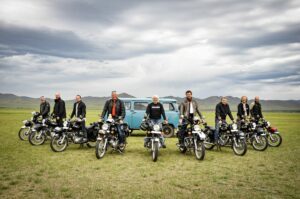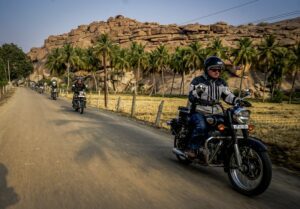When's the best time to take a motorcycle tour in Croatia?
Croatia can be divided into two climatic regions. Inland, the climate is continental, seeing harsh winters with heavy snowfall and minus temperatures and very hot summers with frequent thunderstorms. On the coast, in Istria and Dalmatia, the climate is Mediterranean with pleasant temperatures all year round. Winters are mild, with daytime temperatures reaching around 13°C. During summer, the sea temperature rises to 24°C and outdoor temperatures are around 33°C during the day. The best time to take a motorcycle tour in Croatia is spring and the beginning of autumn. This way, you can avoid the peak season in July and August and enjoy more bearable temperatures. We therefore recommend visiting Croatia in May, June and September, but not autumn months as they generally bring rain.
Croatia's Geography
Croatia is a Balkan country that occupied a large proportion of the former Yugoslavia. Bounded by Bosnia and Herzegovina, Slovenia, Hungary, Serbia and Montenegro, the country is divided into three regions. Croatia proper in the centre and the north, Slavonia to the east, and Istria and Dalmatia to the west. During your motorcycle tour in Croatia, you'll ride across the vast farmlands drained by the Drava and Sava rivers and flushed with colour from wheat and maize crops. To the west, you’ll tackle the Dinarides, made up of high limestone peaks overlooking Istria's and Dalmatia's coasts. The Velebit mountain range reaches 1,700 m and separates the coast from the country's remote inland. Along the Adriatic Coast, Mediterranean scrub vegetation makes an appearance. The Primorje, a narrow stretch of densely populated coast, is one of Croatia's most popular tourist destinations, famous for its idyllic islands. The Croatian Archipelago is the most important in the Adriatic with almost 700 islands, 400 islets and numerous reefs.
Croatia's history and culture
During your motorcycle tour of Croatia, you'll get the chance to experience a vibrant society with diverse cultural influences. Over the course of its history, several civilisations have settled on Croatian soil, including Ancient Greeks, Romans, Byzantines, Franks, Hungarians, Ottomans and Venetians. Associated with Central Europe for centuries, Croatia was part of the Austro-Hungarian Empire until 1918. After the First World War, Croatia became part of the Kingdom of Yugoslavia, being one of the republics alongside Slovenia and Serbia, with Belgrade as the capital. After 1945, Croatia was included in the Socialist Federal Republic of Yugoslavia, a communist federation, until 1991. When Tito died, the country faced serious economic and political difficulties. The 1990 elections in the Former Yugoslav Republics brought pro-independence parties to power. The breakup of Yugoslavia provoked terrible wars with the Serbs until 1995, resulting in the Balkans' current geographical distribution. A European Union member since 2013, the country's situation is now stable and Croatia has successfully unified most of its ethnic territory.





 +442070316050
+442070316050 +16056462343
+16056462343




























